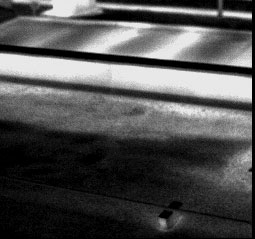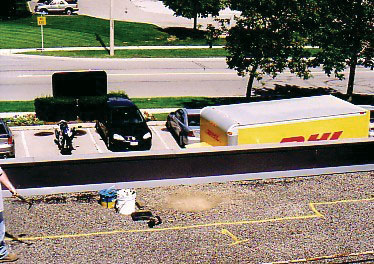Commercial Inspection TIps: Roof Thermography
Welcome to Commercial Corner, an ASHI Reporter feature written by a leading commercial inspection training firm, Carson Dunlop Weldon & Associates. Each month, we feature a new article that provides useful technical and business information on commercial building inspections. Our goal is to stimulate your interest in diversifying into the field of commercial building inspections as a way to expand and grow your business.
For low-rise buildings, such as industrial buildings or retail buildings, the roofing system is the most expensive component that is expected to need replacement over the life of the building. Unwanted moisture intrusion is a major factor affecting the durability and performance of roof systems. When roof systems fail and leaks develop, not only do occupants experience discomfort and energy consumption increases, but the life of roof membrane as a system can be reduced, and worse, the structural integrity of the building can be jeopardized. Common causes of roof failures include poor installation, poor design, material failure and lack of maintenance. Due to rising costs of roofing materials, this type of failure can have a significant impact on the building owner’s bottom line.
Often, the only time a building owner/occupant becomes aware of a roof problem is when a leak is noticed on the interior. Unfortunately, a small leak noted on the interior may mean that water has already saturated the roofing membrane and insulation. Before water from a leak drips onto the ceiling, it is difficult to determine that the roof has water in it from a visual inspection. More so, even when a leak is identified, locating its exact source is often difficult because water can travel along the roof deck before dripping onto the ceiling.
Figure 1 – Roof area with suspect area of wet insulation (white area).
Figure 2 – View of roof after scan, ready to be tested. A core sample will be extracted and put back in place. The buckets contain material to make a temporary repair after the destructive testing.
Performing infrared scans on roofs or roof thermography can help locate areas of wet insulation within the roof system, isolating potential areas of leakage even before it can be detected from the interior. This procedure, performed during the evening, identifies relatively warmer moisture-laden insulation of a cool roof. During the day, the sun heats up the roof surface and the insulation below the roof membrane. In the evening, the roof starts to cool. Damp areas below the roof membrane retain the heat longer than dry areas and show up as warmer areas at night.
Suspect wet areas of insulation are marked on the roof during the scan. A follow-up visit to the roof to perform cut tests to determine the roof composition and verification of suspect wet areas is required. The follow-up visit is done during the day, of course.
This practice is addressed by the American Society for Testing & Materials (ASTM) in measurement standard C1153, “Location of Wet Insulation in Roofing Systems Using Infrared Imaging.” Details on the exact requirements to meet this standard can be obtained from the ASTM Web site — www.astm.org.
While there are certain limitations to performing such an investigation, the results can provide building owners pertinent information regarding the condition of the flat roof system. The results can help determine whether the roof membrane requires immediate replacement or, alternatively, what areas of the roof membrane should be repaired. This method is also helpful for identifying the source of known areas of leakage. Using infrared scans to exactly identify wet areas in need of replacement can save the building owner thousands of dollars. It sounds simple, but a good infrared camera can set you back $10,000 or more. Furthermore, the camera operator needs to know how to use the equipment properly and correctly interpret the images that are recorded. Also, there are exceptions to the types of roofing systems that can be properly scanned. For example, scanning inverted roof membrane assemblies (where the membrane is below the thermal insulation) is futile.
This article and accompanying diagrams have been taken from the yet-to-be-released, updated Commercial Building Inspection textbook written by Carson Dunlop Weldon & Associates Ltd.
Visit www.CDWengineering.com.
To Read the Full Article
ASHI offers its members unparalleled resources to advance their careers. ASHI offers training for inspectors at all levels of knowledge and experience, including resources about all major home systems. Members benefit from a vast network of experienced professionals, providing a community for mentorship and knowledge sharing..
In this Issue

FIND A HOME
INSPECTOR
Professional Networking
Grow your professional network, find a mentor, network with the best, and best part of the community that’s making home inspection better every day.


